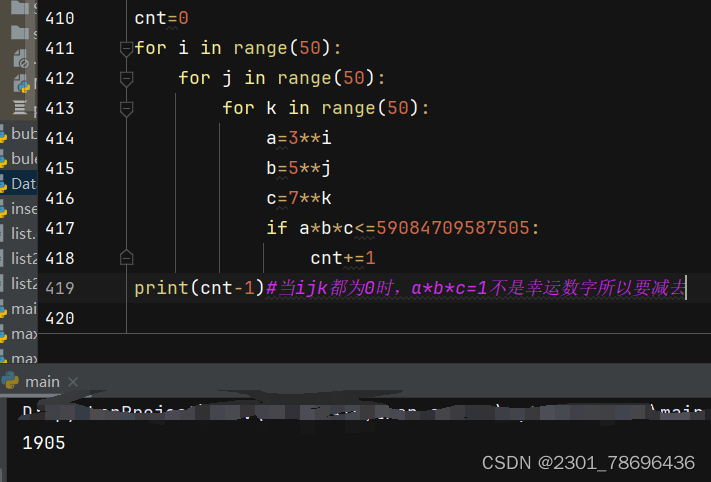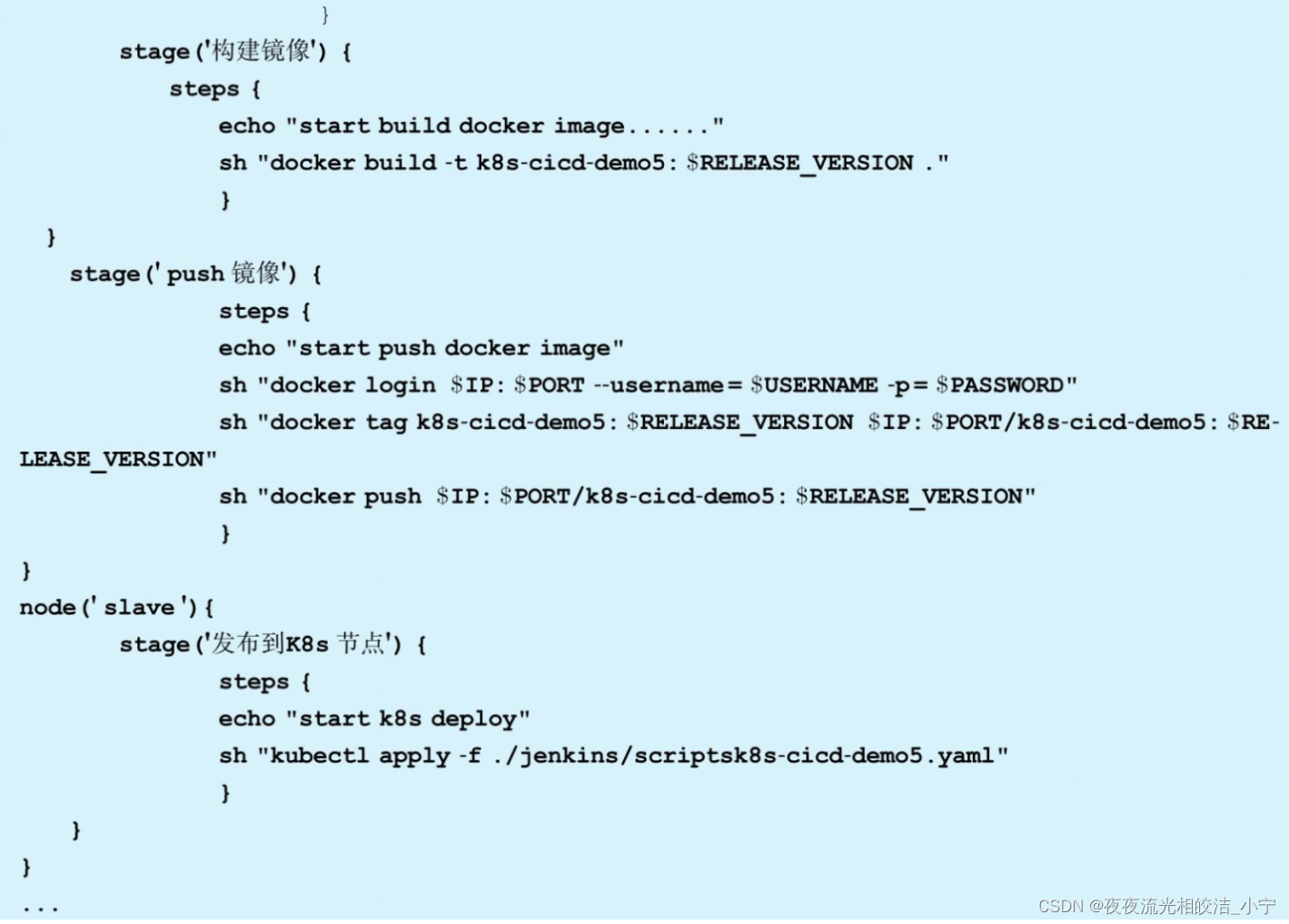目录结构
注:提前言明 本文借鉴了以下博主、书籍或网站的内容,其列表如下:
1、参考书籍:《PostgreSQL数据库内核分析》
2、参考书籍:《数据库事务处理的艺术:事务管理与并发控制》
3、PostgreSQL数据库仓库链接,点击前往
4、日本著名PostgreSQL数据库专家 铃木启修 网站主页,点击前往
5、参考书籍:《PostgreSQL中文手册》
6、参考书籍:《PostgreSQL指南:内幕探索》,点击前往
7、参考书籍:《事务处理 概念与技术》
8、PgSQL · 性能优化 · PostgreSQL TPC-C极限优化玩法,点击前往
9、https://www.enterprisedb.com/blog/finding-memory-leaks-postgres-c-code,点击前往
1、本文内容全部来源于开源社区 GitHub和以上博主的贡献,本文也免费开源(可能会存在问题,评论区等待大佬们的指正)
2、本文目的:开源共享 抛砖引玉 一起学习
3、本文不提供任何资源 不存在任何交易 与任何组织和机构无关
4、大家可以根据需要自行 复制粘贴以及作为其他个人用途,但是不允许转载 不允许商用 (写作不易,还请见谅 💖)
5、本文内容基于PostgreSQL 16.2源码开发而成
深入理解PostgreSQL数据库之查找 PostgreSQL C 代码中的内存泄漏
- 文章快速说明索引
- 工具使用背景说明
- Valgrind
- Leaks in Arenas
- Setup
- Introducing a leak
- Set up Valgrind wrapper
- AddressSanitizer, LeakSanitizer
- Postgres and AddressSanitizer
- eBPF and bcc tools

文章快速说明索引
学习目标:
做数据库内核开发久了就会有一种 少年得志,年少轻狂 的错觉,然鹅细细一品觉得自己其实不算特别优秀 远远没有达到自己想要的。也许光鲜的表面掩盖了空洞的内在,每每想到于此,皆有夜半临渊如履薄冰之感。为了睡上几个踏实觉,即日起 暂缓其他基于PostgreSQL数据库的兼容功能开发,近段时间 将着重于学习分享Postgres的基础知识和实践内幕。
学习内容:(详见目录)
1、深入理解PostgreSQL数据库之查找 PostgreSQL C 代码中的内存泄漏
学习时间:
2024-04-02 10:44:15 星期二
学习产出:
1、PostgreSQL数据库基础知识回顾 1个
2、技术博客 1篇
3、PostgreSQL数据库内核深入学习
注:下面我们所有的学习环境是Centos8+PostgreSQL16.2+Oracle19C+MySQL8.0
postgres=# select version();
version
------------------------------------------------------------------------------------------------------------
PostgreSQL 17devel on x86_64-pc-linux-gnu, compiled by gcc (GCC) 8.5.0 20210514 (Red Hat 8.5.0-21), 64-bit
(1 row)
postgres=#
#-----------------------------------------------------------------------------#
SQL> select * from v$version;
BANNER Oracle Database 19c EE Extreme Perf Release 19.0.0.0.0 - Production
BANNER_FULL Oracle Database 19c EE Extreme Perf Release 19.0.0.0.0 - Production Version 19.17.0.0.0
BANNER_LEGACY Oracle Database 19c EE Extreme Perf Release 19.0.0.0.0 - Production
CON_ID 0
#-----------------------------------------------------------------------------#
mysql> select version();
+-----------+
| version() |
+-----------+
| 8.0.27 |
+-----------+
1 row in set (0.06 sec)
mysql>
工具使用背景说明
上周我在 Postgres 的 WAL Sender 进程中寻找内存泄漏问题。我花了几天时间更加熟悉 Valgrind 和 gcc/clang sanitizers,但最终对它们毫无用处。最后,我偶然发现了 bcc 工具集合中的 memleak 程序,它引导我找到了源代码。
由于我第一次弄清楚这一切有点困难,所以我想分享我经历的过程。处理一些人为的内存泄漏。
尽管这种情况发生在 Postgres 中,并且这篇文章介绍了 Postgres 中的漏洞以便我们进行调查,但这些技术非常有用。
具体来说,在本文结束时,我们将能够获得一个很好的堆栈跟踪,从而导致正在运行的程序发生泄漏,而无需对所需的程序进行任何修改。就像这样的:
135168 bytes in 1 allocations from stack
0x0000ffff7fb7ede8 sysmalloc_mmap.isra.0+0x74 [libc.so.6]
0x0000ffff7fb7fc40 sysmalloc+0x200 [libc.so.6]
0x0000ffff7fb80fbc _int_malloc+0xdfc [libc.so.6]
0x0000ffff7fb81c50 __malloc+0x22c [libc.so.6]
0x0000fffffffff000 [unknown] [[uprobes]]
0x0000000000927714 palloc+0x40 [postgres]
0x00000000007df2f4 PostgresMain+0x1ac [postgres]
0x0000000000755f34 report_fork_failure_to_client+0x0 [postgres]
0x0000000000757e94 BackendStartup+0x1b8 [postgres]
0x000000000075805c ServerLoop+0xfc [postgres]
0x00000000007592f8 PostmasterMain+0xed4 [postgres]
0x00000000006927d8 main+0x230 [postgres]
0x0000ffff7fb109dc __libc_start_call_main+0x7c [libc.so.6]
0x0000ffff7fb10ab0 __libc_start_main@GLIBC_2.17+0x9c [libc.so.6]
0x00000000004912f0 _start+0x30 [postgres]
Valgrind
计算机科学专业的学生通常会学习 Valgrind 来调试程序中的内存泄漏。但 Valgrind 主要在程序结束时检查泄漏,而不是在程序期间。
例如,在这个简单的、有漏洞的 main.c 中:
#include "stdio.h"
#include "string.h"
int main() {
char* x = strdup("flubber");
printf("%s\n", x);
return 1;
}
我们可以使用 Valgrind 构建并运行,它会告诉我们有关泄漏的信息:
$ gcc main.c
$ valgrind --leak-check=full ./a.out
==203008== Memcheck, a memory error detector
==203008== Copyright (C) 2002-2022, and GNU GPL'd, by Julian Seward et al.
==203008== Using Valgrind-3.22.0 and LibVEX; rerun with -h for copyright info
==203008== Command: ./a.out
==203008==
flubber
==203008==
==203008== HEAP SUMMARY:
==203008== in use at exit: 8 bytes in 1 blocks
==203008== total heap usage: 2 allocs, 1 frees, 1,032 bytes allocated
==203008==
==203008== 8 bytes in 1 blocks are definitely lost in loss record 1 of 1
==203008== at 0x48C0860: malloc (vg_replace_malloc.c:442)
==203008== by 0x49A8FB3: strdup (strdup.c:42)
==203008== by 0x4101FB: main (in /home/phil/tmp/a.out)
==203008==
==203008== LEAK SUMMARY:
==203008== definitely lost: 8 bytes in 1 blocks
==203008== indirectly lost: 0 bytes in 0 blocks
==203008== possibly lost: 0 bytes in 0 blocks
==203008== still reachable: 0 bytes in 0 blocks
==203008== suppressed: 0 bytes in 0 blocks
==203008==
==203008== For lists of detected and suppressed errors, rerun with: -s
==203008== ERROR SUMMARY: 1 errors from 1 contexts (suppressed: 0 from 0)
We can add in the correct call to free(x):
#include "stdio.h"
#include "string.h"
#include "stdlib.h"
int main() {
char* x = strdup("flubber");
printf("%s\n", x);
free(x);
return 1;
}
重建并再次使用 Valgrind 运行:
$ gcc main.c
$ valgrind --leak-check=full ./a.out
==203099== Memcheck, a memory error detector
==203099== Copyright (C) 2002-2022, and GNU GPL'd, by Julian Seward et al.
==203099== Using Valgrind-3.22.0 and LibVEX; rerun with -h for copyright info
==203099== Command: ./a.out
==203099==
flubber
==203099==
==203099== HEAP SUMMARY:
==203099== in use at exit: 0 bytes in 0 blocks
==203099== total heap usage: 2 allocs, 2 frees, 1,032 bytes allocated
==203099==
==203099== All heap blocks were freed -- no leaks are possible
==203099==
==203099== For lists of detected and suppressed errors, rerun with: -s
==203099== ERROR SUMMARY: 0 errors from 0 contexts (suppressed: 0 from 0)
Valgrind 告诉我们确实没有泄漏。
Leaks in Arenas
但管理内存的方法有很多种。Postgres 代码通常不会直接调用 malloc。它调用 palloc 在 MemoryContext 中分配内存(在其他代码库中有时称为 arena)。MemoryContext 是一块空闲内存,palloc 从中获取内存。然后在某个时刻它会被一次性释放。
问题是在 MemoryContext 的生命周期内可能会发生泄漏。Valgrind 无法轻易告诉您这些泄露的情况。
Postgres 确实有一个有用的内置方法来转储内存上下文信息。例如,您可以将此行添加到任何函数,或者您可以从 gdb 执行此行:
MemoryContextStats(TopMemoryContext);
您将获得有关内存上下文和所有子内存上下文中的分配的信息,并将其写入 stderr。通过观察 MemoryContextStats 随着时间的推移打印的分配量的增加,并通过添加额外的内存上下文,您也许能够发现泄漏的位置。
但显式添加此调用或通过 gdb 添加此调用是相当手动的。如果有一些系统可以自动告诉我们内存分配的增长情况,那就方便多了。
让我们在 Postgres 中引入一个泄漏,看看我们能做些什么来发现它,重现一个我们不知道这个泄漏在哪里的情况。
Setup
首先获取 Postgres,签出版本 16.2 并构建它:
$ git clone https://github.com/postgres/postgres
$ cd postgres
$ git checkout REL_16_2
$ ./configure \
CFLAGS="-ggdb -Og -g3 -fno-omit-frame-pointer -DUSE_VALGRIND" \
--prefix=$(pwd)/build \
--libdir=$(pwd)/build/lib \
--enable-debug
$ make && make install
这些标志启用 Valgrind、启用调试模式并将构建设置为本地安装而不是全局安装。构建完成后,您可以创建一个 Postgres 数据库:
$ ./build/bin/initdb test-db
The files belonging to this database system will be owned by user "phil".
This user must also own the server process.
The database cluster will be initialized with locale "en_US.UTF-8".
The default database encoding has accordingly been set to "UTF8".
The default text search configuration will be set to "english".
Data page checksums are disabled.
creating directory test-db ... ok
creating subdirectories ... ok
selecting dynamic shared memory implementation ... posix
selecting default max_connections ... 100
selecting default shared_buffers ... 128MB
selecting default time zone ... America/New_York
creating configuration files ... ok
running bootstrap script ... ok
performing post-bootstrap initialization ... ok
syncing data to disk ... ok
initdb: warning: enabling "trust" authentication for local connections
initdb: hint: You can change this by editing pg_hba.conf or using the option -A, or --auth-local and --auth-host, the next time you run initdb.
Success. You can now start the database server using:
build/bin/pg_ctl -D test-db -l logfile start
然后在前台启动Postgres服务器:
$ ./build/bin/postgres --config-file=$(pwd)/test-db/postgresql.conf -D $(pwd)/test-db -k $(pwd)/test-db
2024-03-21 16:08:10.984 EDT [213083] LOG: starting PostgreSQL 16.2 on aarch64-unknown-linux-gnu, compiled by gcc (GCC) 13.2.1 20231205 (Red Hat 13.2.1-6), 64-bit
2024-03-21 16:08:10.986 EDT [213083] LOG: listening on IPv6 address "::1", port 5432
2024-03-21 16:08:10.986 EDT [213083] LOG: listening on IPv4 address "127.0.0.1", port 5432
2024-03-21 16:08:10.987 EDT [213083] LOG: listening on Unix socket "/home/phil/tmp/postgres/test-db/.s.PGSQL.5432"
2024-03-21 16:08:10.989 EDT [213086] LOG: database system was shut down at 2024-03-21 16:07:20 EDT
2024-03-21 16:08:10.992 EDT [213083] LOG: database system is ready to accept connections
在第二个终端中,使用我们构建的 psql 副本连接到它:
./build/bin/psql -h localhost postgres
psql (16.2)
Type "help" for help.
postgres=# select 1;
?column?
----------
1
(1 row)
现在我们来介绍一下泄漏。
Introducing a leak
src/backend/tcop/postgres.c 中的 PostgresMain() 函数有一个看起来很诱人的巨大循环。
4417 /*
4418 * Non-error queries loop here.
4419 */
4420
4421 for (;;)
4422 {
4423 int firstchar;
4424 StringInfoData input_message;
4425
4426 #define CHUNKSIZE 4096
4427 char* waste = palloc(CHUNKSIZE);
4428 printf("%d from %d", CHUNKSIZE, getpid());
让我们做出这样的改变:
diff --git a/src/backend/tcop/postgres.c b/src/backend/tcop/postgres.c
index 36cc99ec9c..28d08f3b11 100644
--- a/src/backend/tcop/postgres.c
+++ b/src/backend/tcop/postgres.c
@@ -4423,6 +4423,10 @@ PostgresMain(const char *dbname, const char *username)
int firstchar;
StringInfoData input_message;
+ #define CHUNKSIZE 4096
+ char* waste = palloc(CHUNKSIZE);
+ printf("%d from %d\n", CHUNKSIZE, getpid());
+
/*
* At top of loop, reset extended-query-message flag, so that any
* errors encountered in "idle" state don't provoke skip.
由于我们在主 Postgres 循环中进行分配,因此每次单个连接的客户端在同一连接上发送一条语句时,我们都会分配一个新的 4KB 块。
由于我们使用 palloc,所有内存都将在进程结束时以 Valgrind 认为有效的方式释放。但在单个客户端的生命周期内,处理连接的 Postgres 后端进程将随着客户端发送语句而不断增加内存。
这是内存泄漏!在极端情况下,如果客户端发送 100 万条语句,我们将在单个进程中分配 4KB * 1,000,000 = 4GB,并且在进程退出之前不会释放它。这是一个有点人为的案例,但这种情况确实发生了。
Set up Valgrind wrapper
让我们用 diff 来重建,记住 Valgrind 已经启用了。
$ make && make install
我们仍然需要将 Postgres 包装在 Valgrind 中。Tom Lane 在 Postgres 邮件列表上分享了他的包装脚本,我已经对其进行了改编。将其添加到 Postgres 存储库根目录中的 postgres.valgrind 中:
#!/usr/bin/env bash
mkdir -p $HOME/valgrind-logs
SCRIPT_DIR=$( cd -- "$( dirname -- "${BASH_SOURCE[0]}" )" &> /dev/null && pwd )
exec valgrind \
--quiet \
--show-leak-kinds=all \
--track-origins=yes \
--verbose \
--suppressions=$(realpath $SCRIPT_DIR/../../)/src/tools/valgrind.supp \
--time-stamp=yes --error-exitcode=128 --trace-children=yes \
--log-file=$HOME/valgrind-logs/%p.log \
$SCRIPT_DIR/postgres.orig "$@"
旁注:我也尝试使用 --leak-check=full 标志运行这个 Valgrind 脚本,但是当我有这个标志时,Postgres 总是会崩溃。我不知道为什么。
现在将当前的 Postgres 二进制文件重命名为 postgres.orig,并将此脚本复制为新的 Postgres 二进制文件:
$ mv build/bin/postgres build/bin/postgres.orig
$ chmod +x postgres.valgrind
$ cp postgres.valgrind build/bin/postgres
启动服务器(无需重新initdb):
$ ./build/bin/postgres --config-file=$(pwd)/test-db/postgresql.conf -D $(pwd)/test-db -k $(pwd)/test-db
2024-03-21 16:18:28.233 EDT [216336] LOG: starting PostgreSQL 16.2 on aarch64-unknown-linux-gnu, compiled by gcc (GCC) 13.2.1 20231205 (Red Hat 13.2.1-6), 64-bit
2024-03-21 16:18:28.234 EDT [216336] LOG: listening on IPv6 address "::1", port 5432
2024-03-21 16:18:28.234 EDT [216336] LOG: listening on IPv4 address "127.0.0.1", port 5432
2024-03-21 16:18:28.234 EDT [216336] LOG: listening on Unix socket "/home/phil/tmp/postgres/test-db/.s.PGSQL.5432"
2024-03-21 16:18:28.236 EDT [216336] LOG: database system was shut down at 2024-03-21 16:18:00 EDT
2024-03-21 16:18:28.238 EDT [216336] LOG: database system is ready to accept connections
并像以前一样连接 psql:
$ ./build/bin/psql -h localhost postgres
psql (16.2)
Type "help" for help.
postgres=#
您将立即在 Postgres 服务器进程中看到一条日志行:
4096 from 216344
这就是我们引入的泄漏。如果我们在同一个 psql 进程中多次运行 SELECT 1:
$ ./build/bin/psql -h localhost postgres
psql (16.2)
Type "help" for help.
postgres=# select 1;
?column?
----------
1
(1 row)
postgres=# select 1;
?column?
----------
1
(1 row)
postgres=# select 1;
?column?
----------
1
(1 row)
postgres=# select 1;
?column?
----------
1
(1 row)
我们将在服务器日志中看到相同数量的打印语句:
... omitted ...
2024-03-21 16:18:28.238 EDT [216336] LOG: database system is ready to accept connections
4096 from 216344
4096 from 216344
4096 from 216344
4096 from 216344
4096 from 216344
现在,如果我们在服务器进程上按 Ctrl-c,我们就可以查看 Valgrind 日志。
$ cat ~/valgrind-logs/*
==00:00:00:00.000 216336== Memcheck, a memory error detector
==00:00:00:00.000 216336== Copyright (C) 2002-2022, and GNU GPL'd, by Julian Seward et al.
==00:00:00:00.000 216336== Using Valgrind-3.22.0 and LibVEX; rerun with -h for copyright info
==00:00:00:00.000 216336== Command: /home/phil/tmp/postgres/build/bin/postgres.orig --config-file=/home/phil/tmp/postgres/test-db/postgresql.conf -D /home/phil/tmp/postgres/test-db -k /home/phil/tmp/postgres/test-db
==00:00:00:00.000 216336== Parent PID: 143066
==00:00:00:00.000 216336==
==00:00:00:14.925 216336==
==00:00:00:14.925 216336== HEAP SUMMARY:
==00:00:00:14.925 216336== in use at exit: 218,493 bytes in 75 blocks
==00:00:00:14.925 216336== total heap usage: 1,379 allocs, 353 frees, 1,325,653 bytes allocated
==00:00:00:14.925 216336==
==00:00:00:14.926 216336== LEAK SUMMARY:
==00:00:00:14.926 216336== definitely lost: 410 bytes in 5 blocks
==00:00:00:14.926 216336== indirectly lost: 3,331 bytes in 45 blocks
==00:00:00:14.926 216336== possibly lost: 102,984 bytes in 8 blocks
==00:00:00:14.926 216336== still reachable: 47,148 bytes in 182 blocks
==00:00:00:14.926 216336== suppressed: 0 bytes in 0 blocks
==00:00:00:14.926 216336== Rerun with --leak-check=full to see details of leaked memory
==00:00:00:14.926 216336==
==00:00:00:14.926 216336== For lists of detected and suppressed errors, rerun with: -s
==00:00:00:14.926 216336== ERROR SUMMARY: 0 errors from 0 contexts (suppressed: 0 from 0)
结果发现有410个字节肯定丢失了。无法解释每个客户端语句丢失的 4096*5 = 20,480 字节的累积损失。
而且,Valgrind 非常慢。Valgrind 手册说:
您的程序将比正常运行速度慢得多(例如 20 到 30 倍),并且使用更多内存。
我们必须尝试其他方法。
AddressSanitizer, LeakSanitizer
Valgrind 自 2002 年就已存在。但在 2013 年左右,Google 直接向 clang 和后来的 gcc 贡献了一些类似的功能。历史对我来说有点难以理解。AddressSanitizer 和 LeakSanitizer 可能曾经是独立的,但现在 AddressSanitizer 包含 LeakSanitizer。要获得sanitizer,您只需使用 -fsanitize=address 编译代码即可。
让我们回到那个简单的、有漏洞的 main.c 程序:
$ cat main.c
#include "stdio.h"
#include "string.h"
#include "stdlib.h"
int main() {
char* x = strdup("flubber");
printf("%s\n", x);
return 1;
}
并使用 sanitizers 编译并运行:
$ gcc -fsanitize=address main.c
$ ./a.out
flubber
=================================================================
==223338==ERROR: LeakSanitizer: detected memory leaks
Direct leak of 8 byte(s) in 1 object(s) allocated from:
#0 0xffff90c817d4 in __interceptor_strdup (/lib64/libasan.so.8+0x817d4) (BuildId: 3109905b64795755dad05d7bb29ad23633a06660)
#1 0x410238 in main (/home/phil/tmp/a.out+0x410238) (BuildId: e98d3e4308c692d5fedef8494d1a925d8f40759a)
#2 0xffff90a609d8 in __libc_start_call_main (/lib64/libc.so.6+0x309d8) (BuildId: 8adf04071ee0060cbf618c401e50c21b9070755f)
#3 0xffff90a60aac in __libc_start_main@@GLIBC_2.34 (/lib64/libc.so.6+0x30aac) (BuildId: 8adf04071ee0060cbf618c401e50c21b9070755f)
#4 0x41012c in _start (/home/phil/tmp/a.out+0x41012c) (BuildId: e98d3e4308c692d5fedef8494d1a925d8f40759a)
SUMMARY: AddressSanitizer: 8 byte(s) leaked in 1 allocation(s).
嘿,那太完美了。甚至比使用 Valgrind 和需要包装器更简单。泄漏检测直接内置于二进制文件中。
让我们用 Postgres 试试这个。
Postgres and AddressSanitizer
回到我们之前克隆的 Postgres git 存储库,请记住我们应用了这个 diff,它将在每个客户端语句中泄漏内存。
diff --git a/src/backend/tcop/postgres.c b/src/backend/tcop/postgres.c
index 36cc99ec9c..28d08f3b11 100644
--- a/src/backend/tcop/postgres.c
+++ b/src/backend/tcop/postgres.c
@@ -4423,6 +4423,10 @@ PostgresMain(const char *dbname, const char *username)
int firstchar;
StringInfoData input_message;
+ #define CHUNKSIZE 4096
+ char* waste = palloc(CHUNKSIZE);
+ printf("%d from %d\n", CHUNKSIZE, getpid());
+
/*
* At top of loop, reset extended-query-message flag, so that any
* errors encountered in "idle" state don't provoke skip.
再次运行 make clean 和 autoconf,但这次在 CFLAGS 值中使用 -fsanitize=address 。然后重建。
$ make clean
$ ./configure \
CFLAGS="-ggdb -Og -g3 -fno-omit-frame-pointer -fsanitize=address" \
--prefix=$(pwd)/build \
--libdir=$(pwd)/build/lib \
--enable-debug
$ make && make install
现在再次运行 Postgres 服务器:
./build/bin/postgres --config-file=$(pwd)/test-db/postgresql.conf -D $(pwd)/test-db -k $(pwd)/test-db
2024-03-22 10:31:54.724 EDT [233257] LOG: starting PostgreSQL 16.2 on aarch64-unknown-linux-gnu, compiled by gcc (GCC) 13.2.1 20231205 (Red Hat 13.2.1-6), 64-bit
2024-03-22 10:31:54.725 EDT [233257] LOG: listening on IPv6 address "::1", port 5432
2024-03-22 10:31:54.725 EDT [233257] LOG: listening on IPv4 address "127.0.0.1", port 5432
2024-03-22 10:31:54.727 EDT [233257] LOG: listening on Unix socket "/home/phil/tmp/postgres/test-db/.s.PGSQL.5432"
2024-03-22 10:31:54.731 EDT [233260] LOG: database system was interrupted; last known up at 2024-03-22 10:28:56 EDT
2024-03-22 10:31:54.740 EDT [233260] LOG: database system was not properly shut down; automatic recovery in progress
2024-03-22 10:31:54.741 EDT [233260] LOG: invalid record length at 0/1531B08: expected at least 24, got 0
2024-03-22 10:31:54.741 EDT [233260] LOG: redo is not required
2024-03-22 10:31:54.742 EDT [233258] LOG: checkpoint starting: end-of-recovery immediate wait
2024-03-22 10:31:54.793 EDT [233258] LOG: checkpoint complete: wrote 3 buffers (0.0%); 0 WAL file(s) added, 0 removed, 0 recycled; write=0.050 s, sync=0.001 s, total=0.052 s; sync files=2, longest=0.001 s, average=0.001 s; distance=0 kB, estimate=0 kB; lsn=0/1531B08, redo lsn=0/1531B08
=================================================================
==233260==ERROR: LeakSanitizer: detected memory leaks
Direct leak of 328 byte(s) in 1 object(s) allocated from:
#0 0xffffaa8e57b0 in malloc (/lib64/libasan.so.8+0xc57b0) (BuildId: 3109905b64795755dad05d7bb29ad23633a06660)
#1 0x10104ac in save_ps_display_args /home/phil/tmp/postgres/src/backend/utils/misc/ps_status.c:165
#2 0x9aed7c in main /home/phil/tmp/postgres/src/backend/main/main.c:91
#3 0xffffa9fb09d8 in __libc_start_call_main (/lib64/libc.so.6+0x309d8) (BuildId: 8adf04071ee0060cbf618c401e50c21b9070755f)
#4 0xffffa9fb0aac in __libc_start_main@@GLIBC_2.34 (/lib64/libc.so.6+0x30aac) (BuildId: 8adf04071ee0060cbf618c401e50c21b9070755f)
#5 0x4a15ac in _start (/home/phil/tmp/postgres/build/bin/postgres+0x4a15ac) (BuildId: 4cede14f9b35edbb8bf598d2efbc883c4ace6797)
SUMMARY: AddressSanitizer: 328 byte(s) leaked in 1 allocation(s).
2024-03-22 10:31:54.831 EDT [233257] LOG: startup process (PID 233260) exited with exit code 1
2024-03-22 10:31:54.831 EDT [233257] LOG: terminating any other active server processes
2024-03-22 10:31:54.831 EDT [233257] LOG: shutting down due to startup process failure
2024-03-22 10:31:54.832 EDT [233257] LOG: database system is shut down
=================================================================
==233257==ERROR: LeakSanitizer: detected memory leaks
Direct leak of 328 byte(s) in 1 object(s) allocated from:
#0 0xffffaa8e57b0 in malloc (/lib64/libasan.so.8+0xc57b0) (BuildId: 3109905b64795755dad05d7bb29ad23633a06660)
#1 0x10104ac in save_ps_display_args /home/phil/tmp/postgres/src/backend/utils/misc/ps_status.c:165
#2 0x9aed7c in main /home/phil/tmp/postgres/src/backend/main/main.c:91
#3 0xffffa9fb09d8 in __libc_start_call_main (/lib64/libc.so.6+0x309d8) (BuildId: 8adf04071ee0060cbf618c401e50c21b9070755f)
#4 0xffffa9fb0aac in __libc_start_main@@GLIBC_2.34 (/lib64/libc.so.6+0x30aac) (BuildId: 8adf04071ee0060cbf618c401e50c21b9070755f)
#5 0x4a15ac in _start (/home/phil/tmp/postgres/build/bin/postgres+0x4a15ac) (BuildId: 4cede14f9b35edbb8bf598d2efbc883c4ace6797)
SUMMARY: AddressSanitizer: 328 byte(s) leaked in 1 allocation(s).
好吧,它立即崩溃了!那很有意思。
但仔细观察,这些消息:
- 与我们引入的 4096 字节泄漏无关
- 看起来并不像泄漏那么重要,因为这些消息与程序初始化有关
由于它们不在循环中,显示的分配不会随着时间的推移而不断增长。所以没什么大不了的。
我们的泄漏在哪里?事实证明,AddressSanitizer/LeakSanitizer 的默认行为是在出现第一个错误时崩溃。在这种情况下,很可能许多生产系统后来才引入sanitizers,这是没有用的。值得庆幸的是,sanitizers有一些运行时选项,我们可以在环境变量中设置。
让我们设置环境变量 ASAN_OPTIONS="halt_on_error=false" 并重新运行 Postgres:
$ ASAN_OPTIONS="halt_on_error=false" ./build/bin/postgres --config-file=$(pwd)/test-db/postgresql.conf -D $(pwd)/test-db -k $(pwd)/test-db
2024-03-22 10:38:07.588 EDT [233554] LOG: starting PostgreSQL 16.2 on aarch64-unknown-linux-gnu, compiled by gcc (GCC) 13.2.1 20231205 (Red Hat 13.2.1-6), 64-bit
2024-03-22 10:38:07.589 EDT [233554] LOG: listening on IPv6 address "::1", port 5432
2024-03-22 10:38:07.589 EDT [233554] LOG: listening on IPv4 address "127.0.0.1", port 5432
2024-03-22 10:38:07.591 EDT [233554] LOG: listening on Unix socket "/home/phil/tmp/postgres/test-db/.s.PGSQL.5432"
2024-03-22 10:38:07.595 EDT [233557] LOG: database system was shut down at 2024-03-22 10:38:06 EDT
=================================================================
==233557==ERROR: LeakSanitizer: detected memory leaks
Direct leak of 336 byte(s) in 1 object(s) allocated from:
#0 0xffffbc6957b0 in malloc (/lib64/libasan.so.8+0xc57b0) (BuildId: 3109905b64795755dad05d7bb29ad23633a06660)
#1 0x10104ac in save_ps_display_args /home/phil/tmp/postgres/src/backend/utils/misc/ps_status.c:165
#2 0x9aed7c in main /home/phil/tmp/postgres/src/backend/main/main.c:91
#3 0xffffbbd609d8 in __libc_start_call_main (/lib64/libc.so.6+0x309d8) (BuildId: 8adf04071ee0060cbf618c401e50c21b9070755f)
#4 0xffffbbd60aac in __libc_start_main@@GLIBC_2.34 (/lib64/libc.so.6+0x30aac) (BuildId: 8adf04071ee0060cbf618c401e50c21b9070755f)
#5 0x4a15ac in _start (/home/phil/tmp/postgres/build/bin/postgres+0x4a15ac) (BuildId: 4cede14f9b35edbb8bf598d2efbc883c4ace6797)
SUMMARY: AddressSanitizer: 336 byte(s) leaked in 1 allocation(s).
2024-03-22 10:38:07.651 EDT [233554] LOG: database system is ready to accept connections
好的! 它报告了泄漏,但仍在继续。让我们像以前一样通过连接 psql 来触发我们添加的泄漏。
$ ./build/bin/psql -h localhost postgres
psql (16.2)
Type "help" for help.
postgres=# select 1;
?column?
----------
1
(1 row)
postgres=# select 1;
?column?
----------
1
(1 row)
postgres=# select 1;
?column?
----------
1
(1 row)
postgres=# select 1;
?column?
----------
1
(1 row)
并退出连接。您可能会看到 psql 进程本身的泄漏报告。但我们正在寻找的泄漏是在 Postgres 后端进程中。
2024-03-22 10:38:07.651 EDT [233554] LOG: database system is ready to accept connections
4096 from 233705
4096 from 233705
4096 from 233705
4096 from 233705
4096 from 233705
=================================================================
==233710==ERROR: LeakSanitizer: detected memory leaks
Direct leak of 336 byte(s) in 1 object(s) allocated from:
#0 0xffffbc6957b0 in malloc (/lib64/libasan.so.8+0xc57b0) (BuildId: 3109905b64795755dad05d7bb29ad23633a06660)
#1 0x10104ac in save_ps_display_args /home/phil/tmp/postgres/src/backend/utils/misc/ps_status.c:165
#2 0x9aed7c in main /home/phil/tmp/postgres/src/backend/main/main.c:91
#3 0xffffbbd609d8 in __libc_start_call_main (/lib64/libc.so.6+0x309d8) (BuildId: 8adf04071ee0060cbf618c401e50c21b9070755f)
#4 0xffffbbd60aac in __libc_start_main@@GLIBC_2.34 (/lib64/libc.so.6+0x30aac) (BuildId: 8adf04071ee0060cbf618c401e50c21b9070755f)
#5 0x4a15ac in _start (/home/phil/tmp/postgres/build/bin/postgres+0x4a15ac) (BuildId: 4cede14f9b35edbb8bf598d2efbc883c4ace6797)
SUMMARY: AddressSanitizer: 336 byte(s) leaked in 1 allocation(s).
=================================================================
==233705==ERROR: LeakSanitizer: detected memory leaks
Direct leak of 336 byte(s) in 1 object(s) allocated from:
#0 0xffffbc6957b0 in malloc (/lib64/libasan.so.8+0xc57b0) (BuildId: 3109905b64795755dad05d7bb29ad23633a06660)
#1 0x10104ac in save_ps_display_args /home/phil/tmp/postgres/src/backend/utils/misc/ps_status.c:165
#2 0x9aed7c in main /home/phil/tmp/postgres/src/backend/main/main.c:91
#3 0xffffbbd609d8 in __libc_start_call_main (/lib64/libc.so.6+0x309d8) (BuildId: 8adf04071ee0060cbf618c401e50c21b9070755f)
#4 0xffffbbd60aac in __libc_start_main@@GLIBC_2.34 (/lib64/libc.so.6+0x30aac) (BuildId: 8adf04071ee0060cbf618c401e50c21b9070755f)
#5 0x4a15ac in _start (/home/phil/tmp/postgres/build/bin/postgres+0x4a15ac) (BuildId: 4cede14f9b35edbb8bf598d2efbc883c4ace6797)
SUMMARY: AddressSanitizer: 336 byte(s) leaked in 1 allocation(s).
但我们的泄漏一无所知!我猜sanitizers在这方面的工作原理与 Valgrind 类似,因为在进程结束时内存已被释放。只是之前没有。
此时我被难住了一段时间。
eBPF and bcc tools
我一直在阅读 Brendan Gregg 的《Systems Performance》一书,所以我开始想知道是否有一种方法可以使用 perf 或 bpf profile来记录正在运行的程序的内存使用情况并查看分配的来源。我使用 perf 来分析函数,但没有使用它来分析内存使用情况。我四处寻找如何用堆栈跟踪记录分配,但无法弄清楚。
因此,我查看了 bpf profile,并注意到 Brendan Gregg 关于内存泄漏的页面。原来有一个可以直接识别内存泄漏的工具,memleak.py!
要使用它,请安装 bcc 工具套件(如果尚未安装)。不幸的是,每个发行版都会更改程序的名称,因此使用 find 可能是最简单的:
$ sudo find / -name '*memleak*'
/tmp/kheaders-6.5.6-300.fc39.aarch64/include/linux/kmemleak.h
/usr/share/man/man3/curs_memleaks.3x.gz
/usr/share/man/man8/bcc-memleak.8.gz
/usr/share/bcc/tools/doc/memleak_example.txt
/usr/share/bcc/tools/memleak
/usr/src/kernels/6.7.9-200.fc39.aarch64/include/linux/kmemleak.h
/usr/src/kernels/6.7.9-200.fc39.aarch64/samples/kmemleak
好的,它位于 /usr/share/bcc/tools/memleak。
让我们在不使用sanitizers的情况下重建 Postgres:
$ make clean
$ ./configure \
CFLAGS="-ggdb -Og -g3 -fno-omit-frame-pointer" \
--prefix=$(pwd)/build \
--libdir=$(pwd)/build/lib \
--enable-debug
$ make && make install
运行 Postgres 服务器:
$ ./build/bin/postgres --config-file=$(pwd)/test-db/postgresql.conf -D $(pwd)/test-db -k $(pwd)/test-db
2024-03-22 11:36:06.364 EDT [245850] LOG: starting PostgreSQL 16.2 on aarch64-unknown-linux-gnu, compiled by gcc (GCC) 13.2.1 20231205 (Red Hat 13.2.1-6), 64-bit
2024-03-22 11:36:06.364 EDT [245850] LOG: listening on IPv6 address "::1", port 5432
2024-03-22 11:36:06.364 EDT [245850] LOG: listening on IPv4 address "127.0.0.1", port 5432
2024-03-22 11:36:06.365 EDT [245850] LOG: listening on Unix socket "/home/phil/tmp/postgres/test-db/.s.PGSQL.5432"
2024-03-22 11:36:06.368 EDT [245853] LOG: database system was shut down at 2024-03-22 11:36:05 EDT
2024-03-22 11:36:06.370 EDT [245850] LOG: database system is ready to accept connections
启动 psql 并获取正在服务器上处理我们请求的关联后端进程 PID:
$ ./build/bin/psql -h localhost postgres
psql (16.2)
Type "help" for help.
postgres=# select pg_backend_pid();
pg_backend_pid
----------------
245858
(1 row)
打开一个新的终端会话,保持 psql 连接和 Postgres 服务器进程处于活动状态。并运行 memleak 程序:
$ sudo /usr/share/bcc/tools/memleak -p 245858
Attaching to pid 245858, Ctrl+C to quit.
[11:37:19] Top 10 stacks with outstanding allocations:
[11:37:24] Top 10 stacks with outstanding allocations:
它将开始每五秒报告一次泄漏。
让我们通过继续在 psql 会话中运行 SELECT 1 语句来更积极地触发泄漏:
$ ./build/bin/psql -h localhost postgres
psql (16.2)
Type "help" for help.
postgres=# select pg_backend_pid();
pg_backend_pid
----------------
245858
(1 row)
postgres=# select 1;
?column?
----------
1
(1 row)
postgres=# select 1;
?column?
----------
1
(1 row)
运行此 SELECT 1 命令 20-30 次左右后,您应该看到 memleak 程序报告:
135168 bytes in 1 allocations from stack
0x0000ffff7fb7ede8 sysmalloc_mmap.isra.0+0x74 [libc.so.6]
0x0000ffff7fb7fc40 sysmalloc+0x200 [libc.so.6]
0x0000ffff7fb80fbc _int_malloc+0xdfc [libc.so.6]
0x0000ffff7fb81c50 __malloc+0x22c [libc.so.6]
0x0000fffffffff000 [unknown] [[uprobes]]
0x0000000000927714 palloc+0x40 [postgres]
0x00000000007df2f4 PostgresMain+0x1ac [postgres]
0x0000000000755f34 report_fork_failure_to_client+0x0 [postgres]
0x0000000000757e94 BackendStartup+0x1b8 [postgres]
0x000000000075805c ServerLoop+0xfc [postgres]
0x00000000007592f8 PostmasterMain+0xed4 [postgres]
0x00000000006927d8 main+0x230 [postgres]
0x0000ffff7fb109dc __libc_start_call_main+0x7c [libc.so.6]
0x0000ffff7fb10ab0 __libc_start_main@GLIBC_2.17+0x9c [libc.so.6]
0x00000000004912f0 _start+0x30 [postgres]
这就是内存泄漏,有一个漂亮的堆栈跟踪可以帮助我们准确找到它在哪里。













![练习 16 Web [极客大挑战 2019]LoveSQL](https://img-blog.csdnimg.cn/direct/cbbfc9d58e95478b89b119b7e6ee77ff.png)





